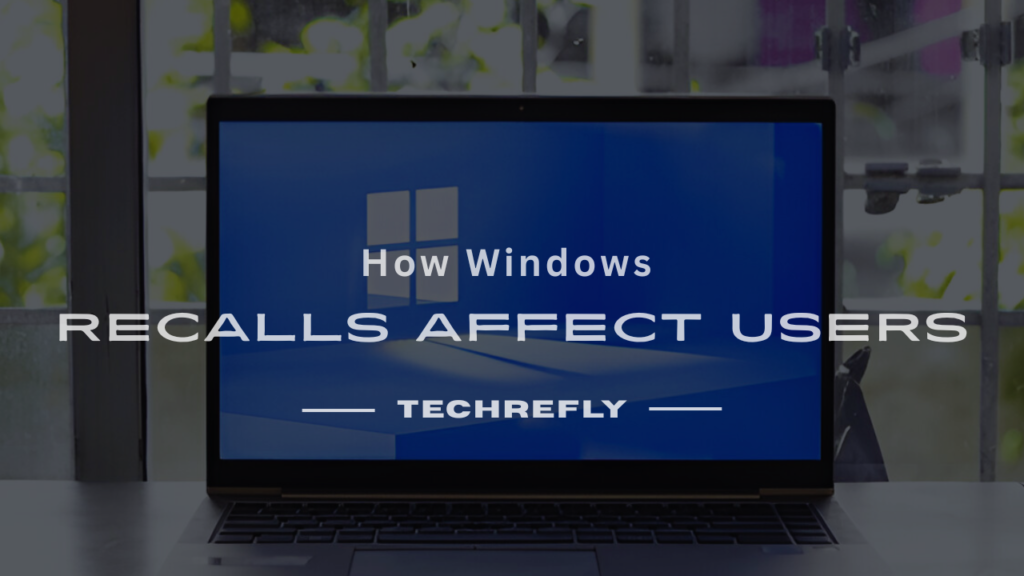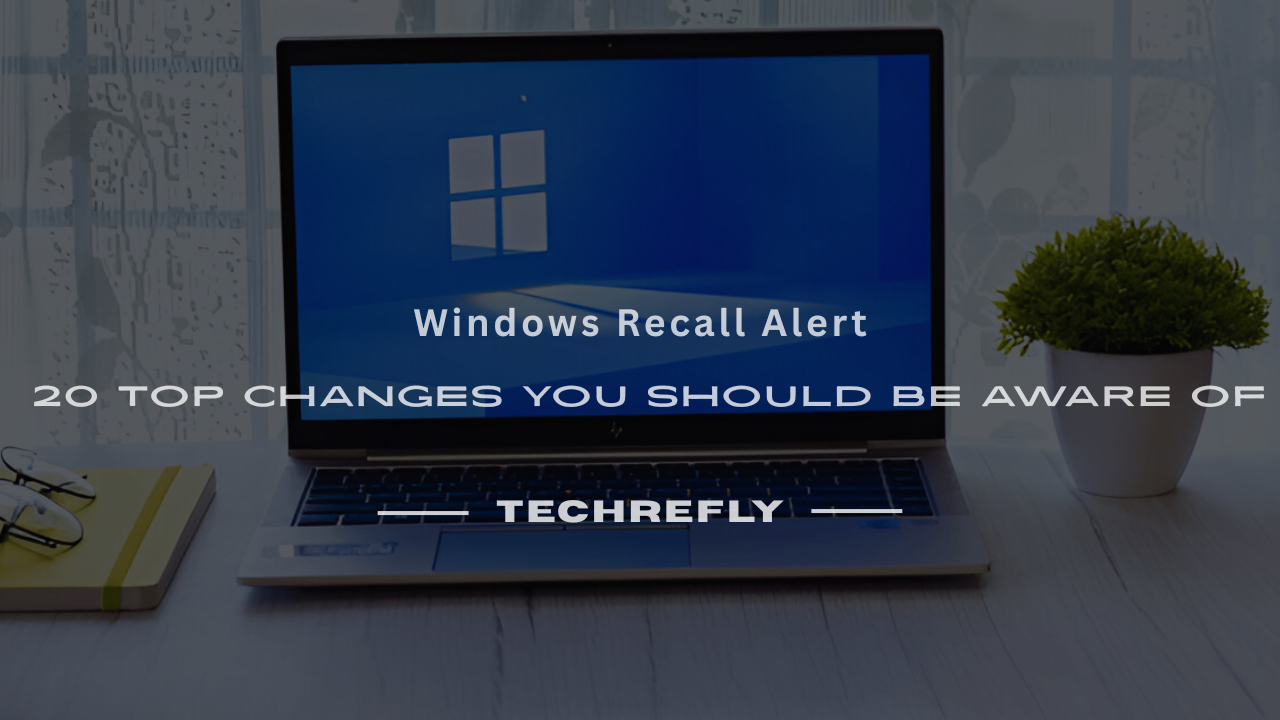Have you ever experienced issues after a Windows update? Whether it’s a software bug or a security breach, a Windows recall can make all the difference in safeguarding your system. In this article, we’re going to dive into the 20 top changes you should be aware of with the latest Windows recall. Understanding these shifts is crucial to ensure your system runs smoothly, securely, and efficiently.
Windows Recall Overview
A Windows recall typically occurs when Microsoft identifies a significant issue or vulnerability within its operating system, often after a major update or release. These recalls, also known as patches or updates, are released to address the problem and prevent it from affecting users. It could involve the removal of a problematic update, the distribution of a security patch, or the introduction of a hotfix. Windows recalls can be initiated for various reasons, ranging from performance issues, security flaws, or system compatibility concerns, and they are essential for maintaining the overall stability and security of Windows devices.
The recall process generally involves detecting and isolating the issue, notifying users, and releasing a new update or fix. For regular consumers, it’s important to stay informed through Microsoft’s official channels, like Windows Update or the support website, to ensure their system is up-to-date with the latest fixes.
Types of Windows Recalls
There are several types of Windows recalls that can be categorized based on the nature of the problem or the affected areas. Some common types include:
Security Patches
These updates address vulnerabilities in the system that could be exploited by malware or hackers. For example, a security recall might be issued after a flaw is discovered that could allow attackers to gain unauthorized access to user data.
Bug Fixes
These recalls aim to resolve technical issues or bugs that may cause performance problems, crashes, or errors. Users may notice improvements in speed, stability, or usability after installing such updates.
Feature Reversals
Occasionally, Microsoft may issue a recall to undo a feature introduced in a previous update that caused user dissatisfaction or conflict with other software. A good example is when a new feature disrupts system performance or interferes with user workflows.
Compatibility Fixes
If a recent Windows update causes compatibility issues with specific hardware or third-party software, a recall might be necessary. These fixes ensure that devices or applications continue to work as expected.
Driver Updates
Drivers are essential for hardware functionality, and Windows recalls sometimes include updates to ensure compatibility with new or updated hardware components, such as printers, monitors, or graphics cards.
Reasons Behind Windows Recalls
Windows recalls can be prompted by a variety of reasons, each impacting users differently. The main reasons behind recalls include:
Security Vulnerabilities
As Windows is one of the most widely used operating systems, it is often targeted by hackers. Security recalls address vulnerabilities that could leave systems open to cyberattacks, malware infections, or data breaches.
Performance Degradation
Sometimes, updates that are intended to improve system performance can inadvertently slow down the system. Microsoft might release a recall to fix such performance problems, particularly if they affect a large number of users.
System Instability
If a new update or feature makes Windows more prone to crashes, freezes, or errors, Microsoft may issue a recall to stabilize the operating system. These issues could arise from bugs introduced in an update or from compatibility conflicts with other system components.
User Experience Issues
Occasionally, new features or interface changes may not meet user expectations or might negatively affect usability. When this happens, Microsoft may roll back certain features or changes, often through a recall.
Hardware Compatibility
If new Windows updates cause compatibility problems with certain hardware, such as printers, external drives, or graphics cards, a recall might be necessary. This ensures that all system components function as they should.

How Windows Recalls Affect Users
Windows recalls can have a significant impact on users in a variety of ways. Depending on the severity of the issue being addressed, users might experience anything from minor inconveniences to major disruptions. Some of the potential effects of a Windows recall include:
Improved System Performance
Once a problematic update or patch is recalled, the system might run more efficiently, with fewer errors, crashes, and performance lags. For users who have experienced issues with their system after a recent update, installing the recall can be a major improvement.
Increased Security
Security recalls protect users from potential data breaches or cyberattacks. When a Windows recall is issued to address a vulnerability, it typically leads to a safer environment, reducing the risk of malware or unauthorized access.
Inconvenience of Rollbacks
In some cases, a recall might involve rolling back or reversing an update that was previously installed. This can be inconvenient for users who are used to the new features or improvements that the update provided.
Potential System Downtime
During the recall process, users may experience temporary system downtime or require to restart their systems multiple times. While updates are being installed, certain programs may also become unavailable for a short period.
Loss of Features
While Windows recalls often resolve issues, there may be a loss of features or changes that users enjoyed. For example, if a recalled update included a new feature that worked well, the recall could remove it.
Security Concerns Related to Windows Recalls
One of the biggest concerns with Windows recalls is the security implications. Security vulnerabilities are a common reason for issuing recalls, and users are urged to install these updates promptly to protect their systems. Some specific security concerns include:
Data Breaches
If a Windows recall addresses a security flaw that could have led to a data breach, it’s critical for users to apply the fix immediately. Unpatched vulnerabilities could allow hackers to steal personal information or access sensitive files.
Malware and Ransomware Attacks
Windows recalls that address security gaps can help defend against malware or ransomware attacks. Cybercriminals often exploit vulnerabilities in operating systems to infect computers, and by addressing these issues through a recall, Microsoft is mitigating such threats.
Zero-Day Vulnerabilities
A zero-day vulnerability occurs when hackers discover and exploit a security hole before the software developer has a chance to fix it. If a Windows recall addresses a zero-day vulnerability, users who fail to install the update could be at a greater risk of cyberattacks.
Patch Management Challenges
Although Windows recall updates are meant to improve security, they can sometimes create new issues. In rare cases, a patch intended to fix one vulnerability might inadvertently introduce another. Users need to remain vigilant and apply subsequent updates to ensure their system remains secure.
Trust and Reputation Concerns
For businesses that rely heavily on Windows, security recalls can damage their trust in the operating system. While Microsoft works to improve security, the constant need for patches and recalls can lead to concerns about the overall reliability of the software.
Performance Impacts of Windows Recalls
When a Windows recall is issued, it often involves critical updates or fixes for issues that may affect the system’s performance. Performance impacts can vary based on the nature of the recall and what aspect of the operating system is being addressed. For instance, a recall might fix a memory leak, address high CPU usage, or resolve issues related to system responsiveness and speed. If your Windows system has been impacted by a faulty update, you may notice a slowdown in overall system performance.
The Process of a Windows Recall
The process of a Windows recall typically begins with Microsoft identifying an issue in the system through internal testing or reports from users. Once a problem is verified, a recall may be initiated to correct it. In the event of a major recall, Microsoft will issue an advisory or alert, often in the form of a Windows update or a specific security patch. The update is usually made available through Windows Update, and affected users will receive notifications prompting them to download and install the fix. The process is often seamless, requiring minimal action from users, but it’s critical to follow Microsoft’s instructions to avoid potential conflicts.
How to Identify if Your Windows System is Affected by a Recall
Identifying if your Windows system is affected by a recall may not always be obvious, especially if the recall involves minor bugs or performance improvements. However, there are several ways to check for recalls. First, you can monitor Windows Update for any alerts or specific notices regarding a recall. Microsoft often sends out updates with descriptions of what they fix, and in some cases, they’ll mention if the update addresses a recalled issue. You can also visit Microsoft’s official website to search for any current advisories or recalls that may affect your version of Windows.
Windows Recall and Software Updates
Windows recalls and software updates are closely linked, as recalls often involve updates to the operating system to fix identified bugs, security issues, or compatibility problems. Software updates in Windows generally aim to improve the system’s functionality, add features, or fix vulnerabilities. When a recall occurs, it may involve an urgent software update that addresses a flaw which could compromise system performance, security, or stability. For instance, after an update, if users report crashes or errors, Microsoft might issue a recall to revert or modify the update to ensure it works as intended. A major component of Windows recalls is ensuring that the software update doesn’t conflict with other programs or cause performance degradation.
Patch Management and Recalls
Patch management plays a crucial role in handling Windows recalls. Essentially, patch management is the process of overseeing updates and security patches to ensure systems are up to date with the latest fixes. In the case of Windows recalls, patch management becomes even more critical because the recall process often includes rolling out specific patches to resolve bugs or security flaws. A Windows recall might require a specific patch to fix an issue with system stability, security vulnerabilities, or compatibility with certain applications. In a patch management strategy, system administrators must review each patch, determine its relevance to their systems, test it in a controlled environment, and then deploy it across their network of computers.
Compatibility Issues Caused by Windows Recalls
Windows recalls can often lead to compatibility issues with various hardware and software components. When a new update or patch is released, it can inadvertently conflict with existing applications, drivers, or system configurations. This is particularly true for businesses that rely on specific legacy systems or older hardware that might not be optimized for the latest version of Windows.
One of the most common compatibility issues arising from Windows recalls is with third-party software. Some programs may cease to function correctly or experience crashes due to updated system libraries or changes in how Windows handles certain file types or processes. For instance, after a recall or update, some users report issues with older versions of antivirus software that are no longer compatible with new security protocols.
Additionally, drivers for hardware devices such as printers, external hard drives, and video cards might fail to work after a Windows recall. Since these drivers are often tied to the specific version of Windows that was originally installed, any changes made during a recall could render them outdated or incompatible with the system.
Moreover, some users experience system freezes or slow performance after updates, which is often tied to compatibility issues. The operating system might struggle to manage newly added features, settings, or applications, causing the computer to lag or perform poorly.
Common Issues Addressed by Windows Recalls
Windows recalls generally address a wide range of issues, from security vulnerabilities to system instability. One of the most common problems is related to critical security flaws. For instance, flaws that allow malicious software to exploit the system and gain unauthorized access to sensitive data are often patched through recalls. These flaws are often discovered by security researchers or during routine vulnerability testing, and Windows recalls act quickly to safeguard users.
Another frequent issue addressed in recalls is system crashes or application malfunctions. Certain updates or features, when initially rolled out, might cause system instability, leading to frequent crashes, blue screens of death (BSOD), or freezing. Recalls often fix these bugs by rolling back problematic updates or releasing patches that stabilize the system.
Incompatibility with hardware, as mentioned earlier, is another issue that recalls often address. Sometimes, after an update, certain hardware devices (e.g., printers, graphics cards, USB ports) no longer function as expected. Recalls correct these issues by pushing out updated drivers or system modifications that restore hardware compatibility.
User interface issues, such as distorted screen resolution, incorrect color rendering, or problematic taskbar behavior, are also common issues that Windows recalls aim to fix. These updates restore the functionality of these interfaces, ensuring the system works as intended.
Steps to Take During a Windows Recall
When a Windows recall is issued, it’s important for users to follow a series of steps to ensure their systems remain secure and functional. Here’s a guide on how to handle a Windows recall:
1. Check for Notifications
Microsoft typically sends notifications about important recalls. Users should always pay attention to system messages or emails informing them about the latest recalls and updates.
2. Back Up Your Data
Before proceeding with any update or recall, back up your important files. This precaution ensures that if something goes wrong, your data will remain safe and can be restored easily.
3. Update System Regularly
To prevent your system from falling behind in terms of security patches, it’s recommended to enable automatic updates. However, if you receive a specific recall message, manually checking for updates in the Windows Update settings might be necessary to ensure you have the latest fixes.
4. Review Release Notes
Microsoft often releases notes that outline what the recall addresses and any known issues. Reading these notes will help you understand the scope of the recall and what problems it fixes or creates.
5. Install the Recall or Patch
Once you are informed and ready, you can proceed with installing the recall. This typically happens through the Windows Update tool. Make sure your system is plugged in (for laptops) and connected to a stable internet connection.
6. Restart Your System
After the update is installed, restart your system to ensure all patches are properly applied. Some updates require a reboot to fully integrate into the system.
7. Test System Performance
After installation, run through your daily tasks and check for any issues with software or hardware. Ensure that everything is functioning as it should.
8. Seek Support If Needed
If something goes wrong after the update, don’t hesitate to contact Microsoft’s support team for help. They can provide guidance on how to resolve issues or roll back the update if necessary.
Microsoft’s Communication During Windows Recalls
Microsoft takes communication very seriously during the recall process. The company understands that issues like security vulnerabilities or system crashes can disrupt users’ workflows, and clear communication is key to helping users navigate the changes.
1. Official Notifications
Microsoft sends official notifications to all affected users through Windows Update or direct emails. These messages contain information about the recall and its importance, as well as steps users can take to ensure the update is applied correctly.
2. Detailed Release Notes
Along with the recall, Microsoft provides detailed release notes that outline what’s being fixed, the known issues, and any user actions required. These notes also explain any performance impacts users might notice after the update and any troubleshooting steps.
3. Security Alerts
For critical recalls that address security vulnerabilities, Microsoft typically issues security alerts across its channels, including its website and via trusted third-party news outlets. These alerts provide in-depth details about the threat, the affected versions of Windows, and any immediate steps users should take to protect their data.
4. Forums and Community Support
Microsoft also maintains a support forum where users can discuss their experiences with the recall. These forums act as a valuable resource for troubleshooting and finding fixes from other users who might have faced similar issues.
5. Support Contact
If users experience difficulties during the recall, Microsoft offers customer support through various channels, including live chat, phone support, and virtual assistants.
How Windows Recalls Improve Future Updates
Windows recalls play a vital role in improving future updates by ensuring that problems are addressed and lessons are learned from past mistakes. Here’s how these recalls contribute to better updates down the line:
1. Fixing Critical Security Flaws
By quickly responding to security flaws and vulnerabilities, Microsoft ensures that future updates are less likely to expose users to malicious attacks. Each recall that addresses security flaws strengthens the update process for future releases.
2. Enhancing Compatibility
Recalls often address compatibility issues with hardware, software, and other system elements. By learning from these conflicts, Microsoft can build more robust systems that are better equipped to handle a wide range of devices and configurations.
3. Optimizing Performance
Windows recalls help optimize system performance by identifying bugs and problems that cause slowdowns or crashes. With each recall, Microsoft fine-tunes the operating system, reducing the likelihood of performance-related issues in future updates.
4. User Feedback Integration
Microsoft uses user feedback from recalls to improve future updates. By analyzing common problems and troubleshooting steps reported by users, Microsoft can enhance its testing process and ensure that future updates meet higher standards.
5. Improving Testing and Development
Recalls provide valuable data for Microsoft’s development teams. By studying the outcomes of each recall, the company can improve its internal testing methods, helping prevent similar problems from cropping up in future Windows versions. Recalls act as a feedback loop that drives continuous improvement.
Conclusion
Windows recalls are an essential part of keeping your device secure and functioning properly. Understanding the changes that occur during these recalls, such as security fixes, performance improvements, and bug resolutions, is key to ensuring your system runs smoothly. Make sure to stay informed, check for updates, and take necessary precautions to keep your data safe.
FAQs
What causes a Windows recall?
Recalls are typically triggered by critical security flaws, compatibility issues, or performance bugs in recent updates.
How do I know if my Windows system is affected?
Check Windows Update or the Update History page to see if there have been any issues reported with your version.
Do I have to uninstall the updates during a recall?
If instructed, uninstalling affected updates may be necessary. Always follow official guidance from Microsoft.
Can a Windows recall slow down my computer?
Some recalls aim to improve system performance, while others may temporarily affect it before the fix is implemented.
How often do Windows recalls happen?
Recalls are rare but important, typically occurring after major updates or when security vulnerabilities are discovered.










